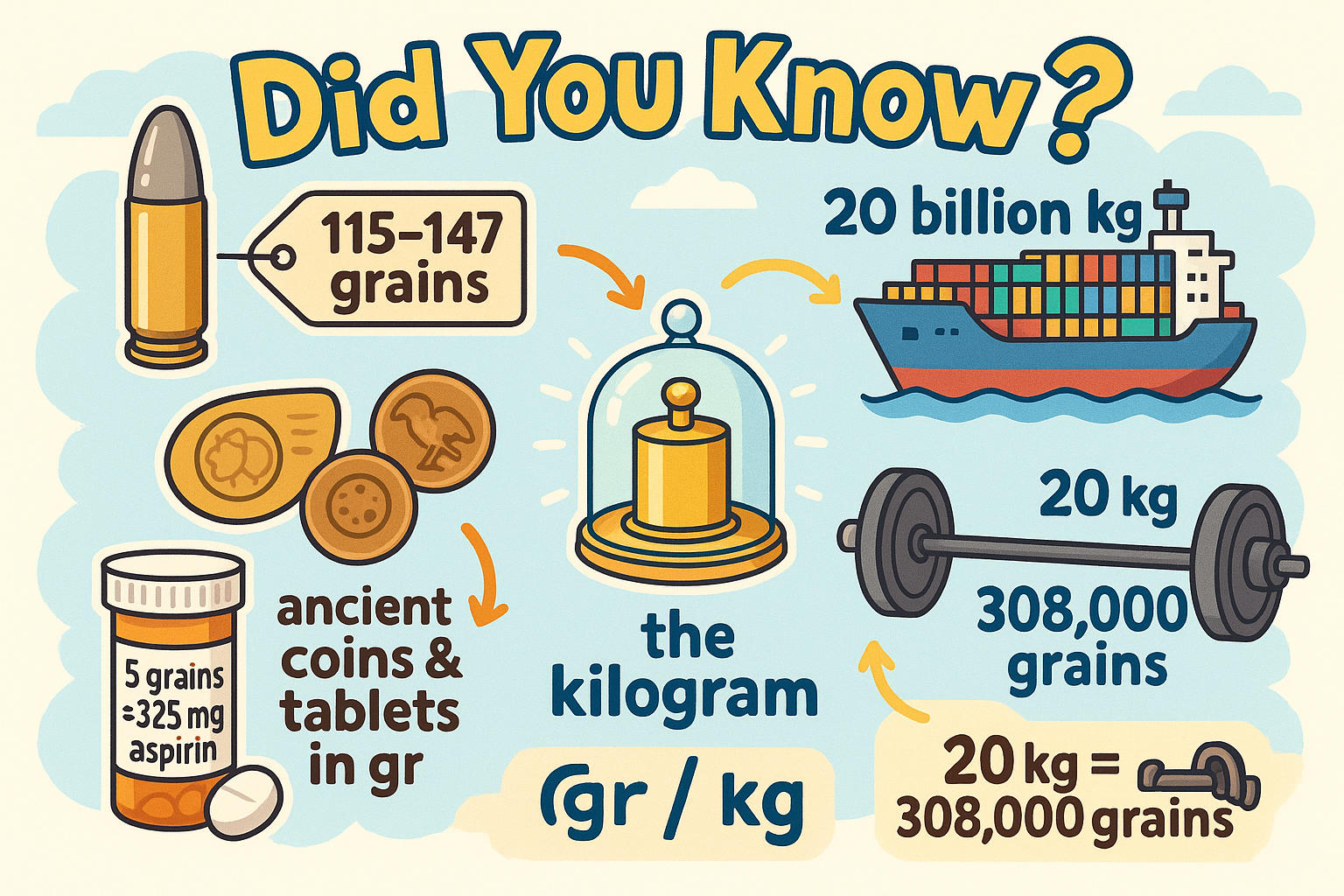grain to kilogram – How to convert gr to kg
Converting grain to kilogram might seem niche, but it’s actually incredibly useful in industries like pharmaceuticals, precious metals, and ammunition. When working with precise weights at micro or macro scale, knowing how to convert grain to kilogram ensures accuracy.
Jetcalculator offers instant tools like the unit converter to help you convert with confidence.
What is a Grain?
The grain (gr) is a small unit of mass used in the imperial system, originally based on the mass of a single grain of barley. Though largely obsolete for general use, it still plays a vital role in:
-
Ammunition weight (bullet grains)
-
Jewelry and precious metals
-
Medicine dosages (especially in U.S. pharmacology)
-
Abbreviation: gr
What is a Kilogram?
The kilogram (kg) is the base unit of mass in the International System of Units (SI). It is widely used across the globe in all fields—industry, commerce, health, and science.
-
Abbreviation: kg
Conversion Formula: gr to kg
To convert from grain to kilogram:
kg = gr × 0.00006479891
Example:
Convert 2,000 grains to kg:
2,000 × 0.00006479891 = 0.1296 kg
Jetcalculator makes this effortless with the weight converter—just input the grain value and get the result instantly in kilograms.

Did you know?
-
The weight of bullets is often measured in grains. A standard 9mm round weighs around 115–147 grains. This unit allows for fine control of ballistics, even today.
-
Over 20 million metric tons (20 billion kilograms) of rice are exported globally each year. That’s a clear sign of how common the kilogram is in international trade.
-
The grain was one of the earliest units standardized by ancient civilizations, including the Sumerians and Egyptians. Some coins and medicinal tablets from 3,000 years ago were measured in grains.
-
For over 100 years, the official kilogram was a platinum-iridium cylinder stored in France. It was recently redefined in 2019 based on physical constants.
-
In historical medicine, the grain was used to measure morphine and other potent drugs. Even today, 325 mg of aspirin equals exactly 5 grains, a dose still labeled that way in the U.S.
-
In modern gyms worldwide, weights are labeled in kilograms. A standard Olympic weightlifting bar weighs 20 kilograms, or over 308,000 grains!

“A Grain of Truth”: The Apothecary's Legacy
In the 19th and early 20th centuries, pharmacies across Europe and America relied on the grain as a critical unit in the apothecary system. Prescriptions were written in grains for everything from aspirin to arsenic. The system was so trusted that many physicians kept grain-precision scales on their desks.
One famous example: the painkiller codeine phosphate was often dosed at ½ grain per tablet. Misconversions between grains and metric units sometimes led to fatal errors, prompting the transition to grams and kilograms in most medical settings.
This transition marks one of the earliest global pushes toward the modern metric system we use today, driven by the need for safety and standardization.
Conclusion
Converting grain to kilogram may seem like a tiny leap—but it’s a crucial one for accuracy in industries where every microgram counts. From bullet weights to chemical doses, understanding how to convert gr to kg ensures clarity, safety, and precision.
With Jetcalculator’s conversion converting gr to kg is effortless and error-free. Whether you’re dealing in milligrams or megatons, Jetcalculator delivers the right value instantly.
Explore More Conversion Tools
-
Ounces to Grams Converter – ideal for cooking and lab work
-
Grams to Kilograms – smooth scale transitions
-
Kilograms to Pounds – useful for fitness, shipping, and international trade
-
Meters to Feet – perfect for metric-to-imperial length conversion

